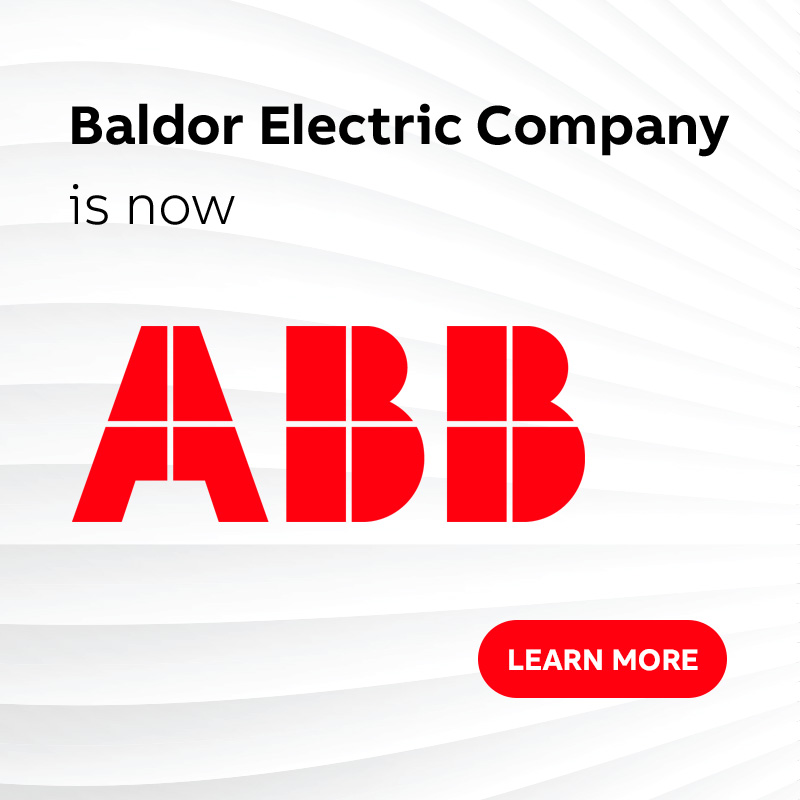
How to cut HVAC system costs
Electric motors and electric motor-driven systems account for more than 45 percent of global electricity consumption, and that number is expected to double by 2040. In the U.S., heating, ventilation and air-conditioning (HVAC) systems are the number-one culprit, with industrial pumps, fans and compressed air systems accounting for more than 80 percent of that electricity use in industrial motor systems.
HVAC systems greatly improve our living conditions; we have engineered solutions to control the temperature, humidity, and fresh air flow in buildings. But that comfort comes with a hefty price tag. Not surprisingly, HVAC systems consume about half of the energy used in buildings. For context, in large commercial buildings, equipment used to move people, like escalators and elevators, accounts for less than five percent of the energy consumption. Obviously, improving the efficiency of HVAC systems is essential to reducing our energy consumption, and thereby environmental impact, but it also makes good financial sense.
Why is such a disproportionate amount of energy used for heating and cooling? For starters, moving air is one of the most inefficient uses of energy, and much of that blame lies with the design of many of the fans used to circulate heated or cooled air. In many setups, AC motors are still operating direct-on-line, or in an across-the-line configuration. Air speed is controlled by inefficient mechanical systems, such as dampers or louvers, and belt drives, which are still in use in many dated HVAC systems.
Another issue that affects efficiency is that applications relying on AC motors operating across the line require full line voltage when started. This means that the motors draw a large amount of current, as much as eight times the motors’ rated load.
Finally, as many as half of all HVAC motors applications may be oversized and therefore underloaded, which results in less efficient motor operation, higher motor current, lower power factor and higher energy loss in the power distribution system. If a motor runs consistently at less than 40 percent capacity, considerable energy savings can be achieved by replacing the motor with a smaller, higher-efficiency model; however, motor replacement is not always a feasible option.
Aside from a complete HVAC motor replacement, there’s another solution that can address these problems: the addition of a variable speed drive (VSD). Variable speed drives sit between the electrical supply and the motor, and their basic function is to control the flow of energy from the mains to the process. Power from the electrical supply goes into the drive, the drive then regulates the power that is fed to the motor and adjusts the frequency and the voltage based on your current process demands. This means AC motors can be run at the optimal speed and torque according to the demand needed. Using a drive to control the motor can save as much as 40 percent of the total operating cost.
The technological advancement and adoption of high-efficiency motors and variable speed drives are key factors to achieving significant energy efficiency improvements in industry and infrastructure, and in reducing our overall carbon footprint. Improving the efficiency of electric motors can save energy, reduce operating costs and improve productivity.
Motor systems consume large amounts of electricity and can provide an opportunity for significant energy savings. The annual energy cost of running a motor is usually many times greater than its initial purchase price; however, the purchase of a new HVAC motor is often driven by the price, not potential electricity consumption. Investing a little more money upfront for a more efficient motor is paid back in energy savings; often in as few as one to three years.
Even a small improvement in efficiency will result in energy and cost savings. And, by following industry best practices, electric motor efficiency can be further improved by 20 to 30 percent, resulting in significant savings and reduced environmental impact, especially in motors that can remain in operation for 20 years or longer.
A reduction in energy usage isn’t the only way to realize cost savings through efficiency upgrades. Electrical utility companies in many areas offer rebates to industrial and commercial customers for energy efficiency upgrades to lower the demand capacity.
Motor efficiency standards are in place, yet there is still a demand to achieve greater efficiencies in order to support industry and sustainability goals. With an abundance of motor technologies available, it pays to choose the most efficient motor technology available in order to obtain the many benefits of energy efficiency improvements in HVAC installations; lower energy bills, reduced greenhouse gases, improved air quality, improved system efficiency and process output.
It is estimated that simply updating outdated motors to newer high-efficiency motor systems would cut global electricity demand by up to 10 percent, so join the Energy Efficiency Movement today!

